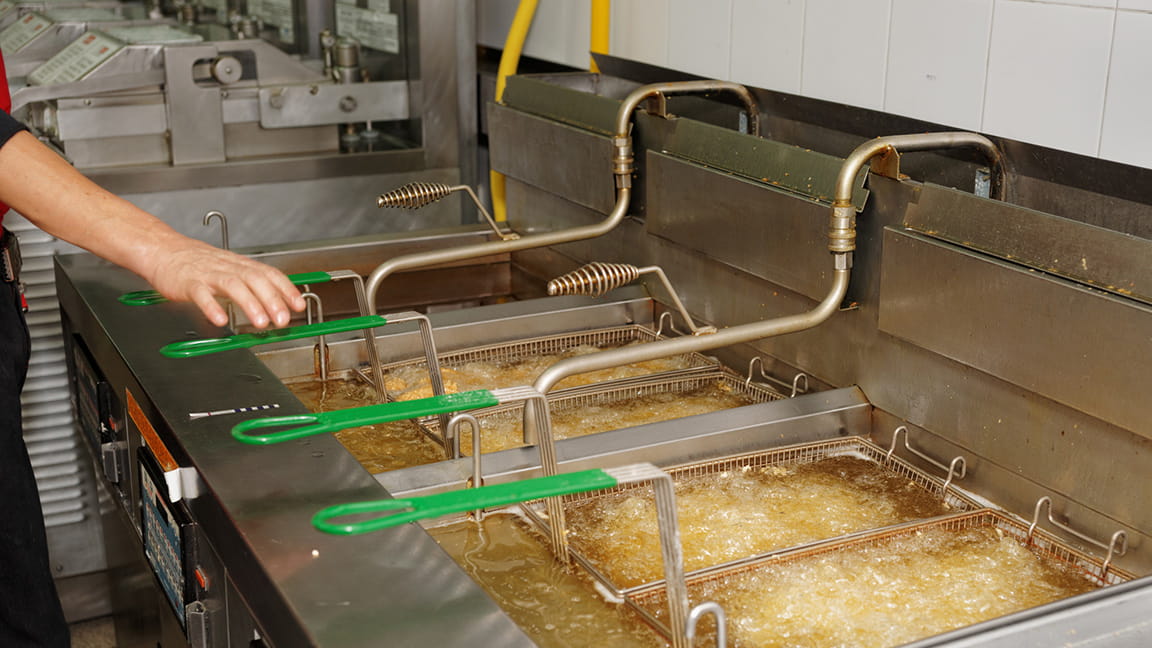Trans Fats

We know research shows that reducing trans fat in the American diet helps reduce risk of heart disease, but how and why? Let's try to clear up the confusion about trans fats.
What are trans fats?
There are two broad types of trans fats found in foods: naturally-occurring and artificial trans fats. Naturally-occurring trans fats are produced in the gut of some animals and foods made from these animals (e.g., milk and meat products) may contain small quantities of these fats. Artificial trans fats (or trans fatty acids) are created in an industrial process that adds hydrogen to liquid vegetable oils to make them more solid.
The primary dietary source for trans fats in processed food is “partially hydrogenated oils." Look for them on the ingredient list on food packages. In November 2013, the U.S. Food and Drug Administration (FDA) made a preliminary determination that partially hydrogenated oils are no longer Generally Recognized as Safe (GRAS) in human food.
Why do some companies use trans fats?
Trans fats are easy to use, inexpensive to produce and last a long time. Trans fats give foods a desirable taste and texture. Many restaurants and fast-food outlets use trans fats to deep-fry foods because oils with trans fats can be used many times in commercial fryers. Several countries (e.g., Denmark, Switzerland, and Canada) and jurisdictions (California, New York City, Baltimore, and Montgomery County, MD) have reduced or restricted the use of trans fats in food service establishments.
How do trans fats affect my health?
Trans fats raise your bad (LDL) cholesterol levels and lower your good (HDL) cholesterol levels. Eating trans fats increases your risk of developing heart disease and stroke. It’s also associated with a higher risk of developing type 2 diabetes.
Why did trans fats become so popular if they have such bad health effects?
Before 1990, very little was known about how trans fat can harm your health. In the 1990s, research began identifying the adverse health effects of trans fats. Based on these findings, FDA instituted labeling regulations for trans fat and consumption has decreased in the US in recent decades, however some individuals may consume high levels of trans fats based on their food choices.
Which foods contain trans fats?
Trans fats can be found in many foods – including fried foods like doughnuts, and baked goods including cakes, pie crusts, biscuits, frozen pizza, cookies, crackers, and stick margarines and other spreads. You can determine the amount of trans fats in a particular packaged food by looking at the Nutrition Facts panel. However, products can be listed as “0 grams of trans fats” if they contain 0 grams to less than 0.5 grams of trans fat per serving. You can also spot trans fats by reading ingredient lists and looking for the ingredients referred to as “partially hydrogenated oils.”
Are there naturally occurring trans fats?
Small amounts of trans fats occur naturally in some meat and dairy products, including beef, lamb and butterfat. There have not been sufficient studies to determine whether these naturally occurring trans fats have the same bad effects on cholesterol levels as trans fats that have been industrially manufactured.
How much trans fat can I eat a day?
The American Heart Association recommends cutting back on foods containing partially hydrogenated vegetable oils to reduce trans fat in your diet and preparing lean meats and poultry without added saturated and trans fat.
How can I limit my daily of trans fats?
Read the Nutrition Facts panel on foods you buy at the store and, when eating out, ask what kind of oil foods are cooked in. Replace the trans fats in your diet with monounsaturated or polyunsaturated fats.
Regulating Your Intake of Saturated and Trans Fats
The American Heart Association recommends that adults who would benefit from lowering LDL cholesterol reduce their intake of trans fat and limit their consumption of saturated fat to 5 to 6% of total calories.
Here are some ways to achieve that:
- Eat a dietary pattern that emphasizes fruits, vegetables, whole grains, low-fat dairy products, poultry, fish and nuts. Also limit red meat and sugary foods and beverages.
- Use naturally occurring, unhydrogenated vegetable oils such as canola, safflower, sunflower or olive oil most often.
- Look for processed foods made with unhydrogenated oil rather than partially hydrogenated or hydrogenated vegetable oils or saturated fat.
- Use soft margarine as a substitute for butter, and choose soft margarines (liquid or tub varieties) over harder stick forms. Look for “0 g trans fat” on the Nutrition Facts label and no hydrogenated oils in the ingredients list.
- Doughnuts, cookies, crackers, muffins, pies and cakes are examples of foods that may contain trans fat. Limit how frequently you eat them.
- Limit commercially fried foods and baked goods made with shortening or partially hydrogenated vegetable oils. Not only are these foods very high in fat, but that fat is also likely to be trans fat.
- Read the full American Heart Association Diet and Lifestyle Recommendations.








